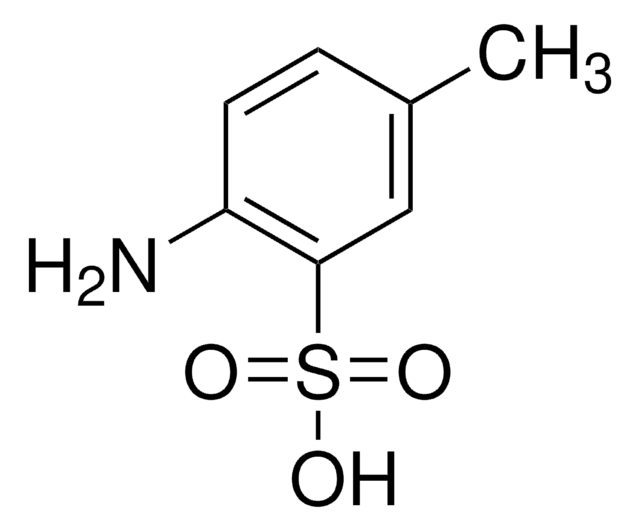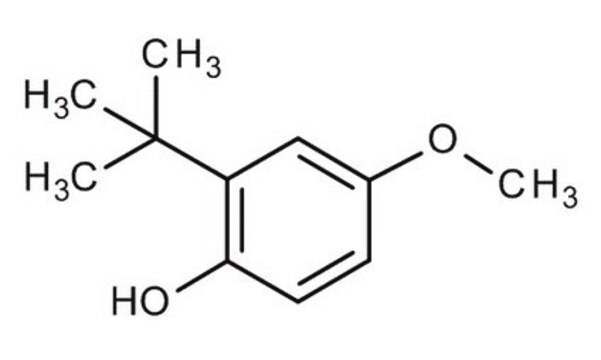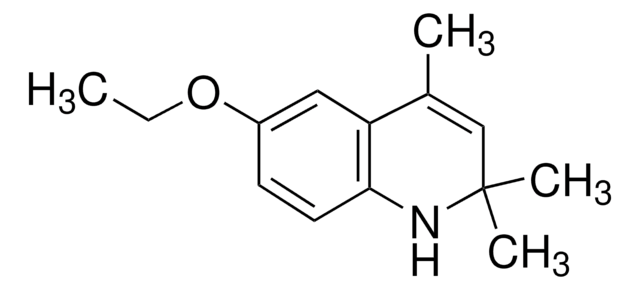Kluczowe dokumenty
B1212000
Butylhydroxyanisole
European Pharmacopoeia (EP) Reference Standard
Synonim(y):
Butylated hydroxyanisole, 2(3)-t-Butyl-4-hydroxyanisole, 2(3)-t-Butylhydroquinone monomethyl ether, BHA
About This Item
Polecane produkty
klasa czystości
pharmaceutical primary standard
gęstość pary
6.2 (vs air)
rodzina API
butylhydroxyanisole
temp. samozapłonu
599 °F
producent / nazwa handlowa
EDQM
mp
58-60 °C (lit.)
Zastosowanie
cleaning products
cosmetics
food and beverages
personal care
pharmaceutical (small molecule)
Format
neat
ciąg SMILES
O(C)c1cc(c(cc1)O)C(C)(C)C
InChI
1S/C11H16O2/c1-11(2,3)9-7-8(13-4)5-6-10(9)12/h5-7,12H,1-4H3
Klucz InChI
MRBKEAMVRSLQPH-UHFFFAOYSA-N
Szukasz podobnych produktów? Odwiedź Przewodnik dotyczący porównywania produktów
Opis ogólny
Zastosowanie
Opakowanie
Inne uwagi
produkt powiązany
Zwroty wskazujące rodzaj zagrożenia
Zwroty wskazujące środki ostrożności
Klasyfikacja zagrożeń
Aquatic Chronic 2
Kod klasy składowania
11 - Combustible Solids
Klasa zagrożenia wodnego (WGK)
WGK 2
Temperatura zapłonu (°F)
241.9 °F - Pensky-Martens closed cup
Temperatura zapłonu (°C)
116.6 °C - Pensky-Martens closed cup
Wybierz jedną z najnowszych wersji:
Certyfikaty analizy (CoA)
It looks like we've run into a problem, but you can still download Certificates of Analysis from our Dokumenty section.
Proszę o kontakt, jeśli potrzebna jest pomoc Obsługa Klienta
Masz już ten produkt?
Dokumenty związane z niedawno zakupionymi produktami zostały zamieszczone w Bibliotece dokumentów.
Klienci oglądali również te produkty
Nasz zespół naukowców ma doświadczenie we wszystkich obszarach badań, w tym w naukach przyrodniczych, materiałoznawstwie, syntezie chemicznej, chromatografii, analityce i wielu innych dziedzinach.
Skontaktuj się z zespołem ds. pomocy technicznej







